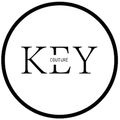Greenpeace spots never before seen scale Chinese pollution
The investigations were published today in a report “Toxic Threads: Putting Pollution on Parade”, which details how facilities, some of which produce textiles for major high street brands including Levi’s and Calvin Klein and GAP, are exploiting complex wastewater systems to hide scrutiny of their manufacturing processes.
“Of all the factories we have been to over the past few years, we have never before seen such large-scale pollution. The samples of wastewater taken on site have proven to be some of the most toxic testing results we have seen throughout our campaigning. This pollution must be stopped,” says Yifang Li, Toxics Campaigner at Greenpeace East Asia.
Greenpeace investigated two of China’s biggest communal wastewater treatment plants (WWTP), in coastal Zhejiang Province. Testing on water samples taken from near the pipe mouths revealed that processed effluent from both Shaoxing WWTP (China’s largest in terms of daily processing capacity) and Linjiang WWTP contained toxic chemicals that are cancer-causing and chemicals that are toxic to reproductive systems. Some of these chemicals are persistent and bio-accumulative.
Greenpeace investigators have testimonies from local communities whose soil and water are being polluted. Many of these locals are concerned about their health much so that in a typically water-abundant area, some communities have even been relying on the local government to deliver drinking water.
“Many international brands, such as Levi’s, source their products from facilities within such Industrial Zones, yet identifying whether individual suppliers are responsible for releasing hazardous substances in their effluent is almost impossible. This provides a convenient smokescreen for unacceptable environmental practices at individual facilities, including the use and discharge of hazardous chemicals, by the global textile industry,” said Li.
The dispersal of hazardous chemicals into water systems, both when clothes are manufactured and after they are sold – such as when chemical residues in the products are washed out – can only be addressed by the rapid and transparent elimination of their use at their source.
"Along with setting short term timelines to eliminate the worst hazardous chemicals, brands must require their suppliers to publicly disclose releases of these chemicals. Both are key steps to achieve zero discharge of hazardous chemicals by 2020 and Greenpeace will continue to expose brands that do not take responsibility for every stage of their supply chain,” said Martin Hojsik, Greenpeace International Detox Campaign Coordinator.
Greenpeace International
































-Ltd..jpg?tr=w-120,h-60,c-at_max,cm-pad_resize,bg-ffffff)





.jpg?tr=w-120,h-60,c-at_max,cm-pad_resize,bg-ffffff)
.jpg?tr=w-120,h-60,c-at_max,cm-pad_resize,bg-ffffff)






